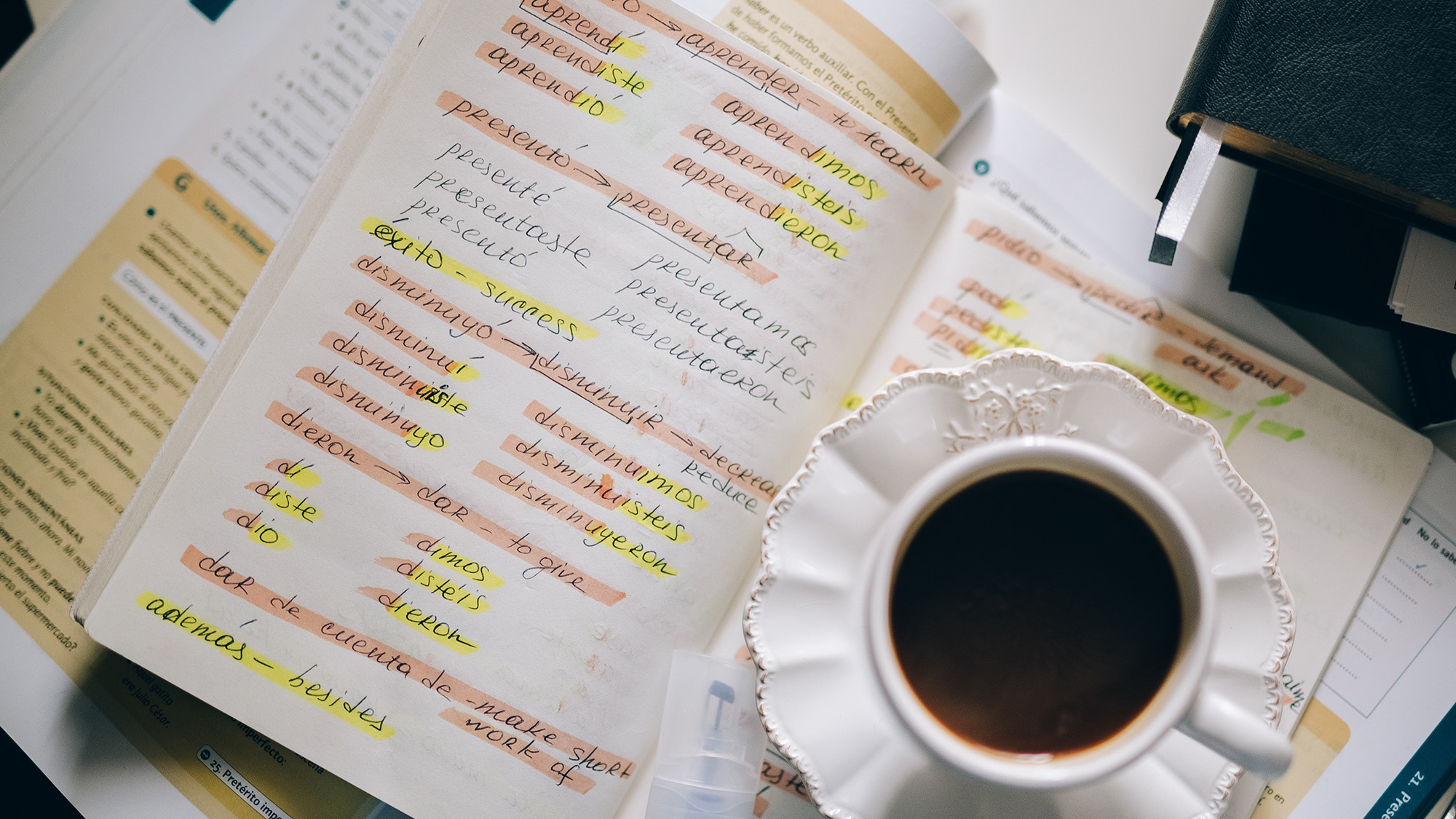

More than one billion people around the world are trilingual. If you’re interested in joining this rank but love Spanish music just as much as you do French cinema, it can be difficult to pick a language to learn first. Luckily, you don’t necessarily have to.
“It’s definitely possible to learn two languages at once,” says Cindy Blanco, managing editor of learning content at Duolingo. If you put in the hours and effort, these tips will prevent you from getting tongue-tied in a foreign language or two.
Your brain on language
Humans are wired to learn languages. We adopt our native tongues by absorbing phonetics in the womb, and then by listening and interacting with others once we’re born. Ultimately, this process gives way to associating words with meaning.
No matter your age, learning a language requires your brain to make new connections. Kids’ brains are good at this: thanks to their unparalleled neuroplasticity, they can easily adapt to new experiences. But as we grow older, our noggins become less malleable, making it more difficult to carve out the neural pathways necessary to understand a new lingo.
“[Learning a new language] is like you’re going through the jungle with a machete and creating a path,” says Elizabeth Zackheim, co-founder of ABC Languages. “That’s the beginning. Then you have a well-trod walking path and maybe a dirt road. And then you pave the road and at some point, fluency is like a super highway.”
[Related: The language you speak changes your perception of time]
When you learn two languages at once, you’re macheting your way through the jungle but instead of creating one path, you’re creating two. That requires twice the discipline, time, and motivation.
But it is possible. A 2020 study published in the International Journal of Multilingualism found that Chinese students simultaneously learning English and Russian acquired similar proficiency in English compared to a control group that just studied English.
Those who are already bilingual might have it even easier because their brain has already completed this “enormous effort,” says Blanco. A 2017 study published in the journal Bilingualism: Language and Cognition suggests that bilinguals can learn new languages faster than monolinguals.
Make a plan according to your objectives
Blanco says the biggest challenge of learning two languages simultaneously is finding enough time and opportunities to study them. But to know just how much effort and resources to put into it, you’ll need to define what you want to achieve with the lingos you’re planning to adopt.
“Becoming professor-level fluent in Polish is going to take a really long time, but if you want to be able to have conversations while you’re traveling, that won’t take as much time,” she says.
[Related: Complex languages might shape bilingual brains differently]
To help you alot your time and energy more efficiently, and get a better idea of what your study plan will look like, it’s important to understand how difficult a particular language is for a native English speaker. While it can take up to 2,200 hours to learn vernaculars like Arabic and Mandarin, if you grew up speaking English the U.S. Foreign Service Institute says it’ll be easier for you to pick up Czech and German, for example. The easiest languages for native English speakers to learn include Spanish, French, and Portuguese, which require between 600 and 750 hours of class and/or immersion to achieve professional proficiency.
Get some guidance
For beginners, Blanco says it’s especially important to get structured language practice, which means having someone knowledgeable in the vernacular guiding the learning. This will ensure you get deliberate exposure to different pronunciations, vocabulary, and grammar.
You can do this by finding a private tutor or attending weekly classes (in person or online). As a complement to this structured practice, you can study by yourself, fill out language grammar workbooks, and try language-learning apps like Babbel, Mondly, or Duolingo (all of them available for Android, iOS, and on the web).
If it feels too daunting to go full speed ahead on both languages right away, Zackheim says it might be easier to grasp basic grammar and vocabulary for one lingo before adding another one to the mix. That could look like focusing on building up your Spanish basics for a few months before adding on French.
Don’t forget cultural immersion
Unfortunately, many of us don’t have a lot of time to dedicate to grammar workbooks or hours-long language courses. This is why it’s important to mix in different kinds of learning opportunities whenever you can.
“You really need to be doing activities in the language multiple days a week,” Blanco says. “If you’re someone who goes to the gym, make a playlist in the language you’re learning. As long as you’re listening to it and using it in some way, that will help build these language skills.”
You can also listen to podcasts in your desired languages, watch movies or TV shows with subtitles, read books, or attend language exchanges near you. Cultural immersion has the added benefit of not feeling quite as laborious as study time, she adds.
Learning two languages sounds like a huge challenge to take on, but instead of focusing on its difficulty or how long it takes, it helps to think about how it opens doors to new worlds.
“It gives you twice as many movies for you to stream, twice as many playlists to build,” Blanco says. “And twice as many communities to connect with.”
